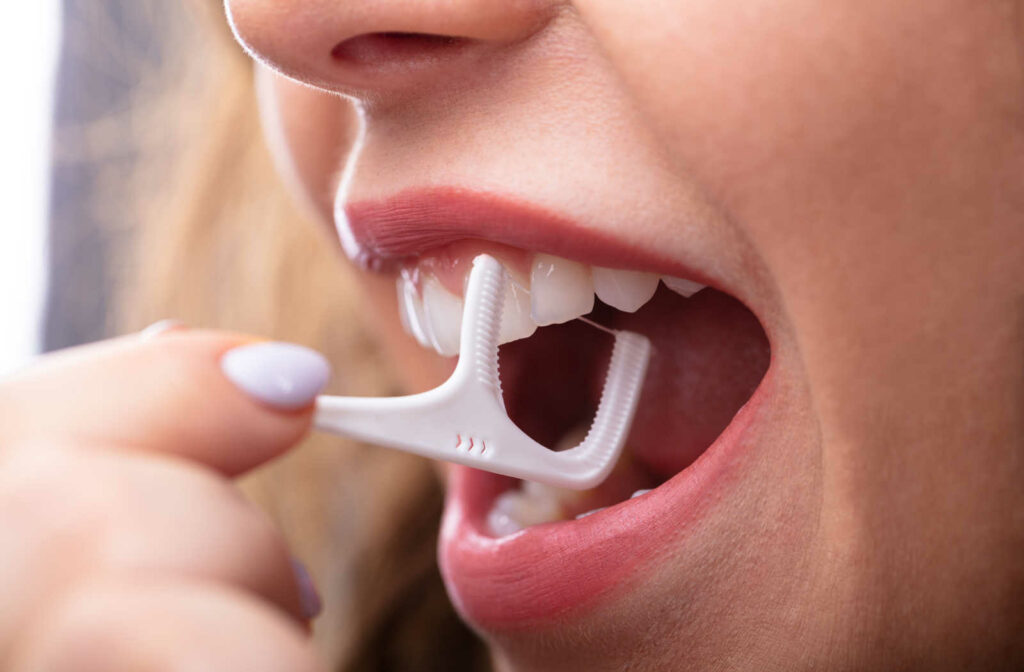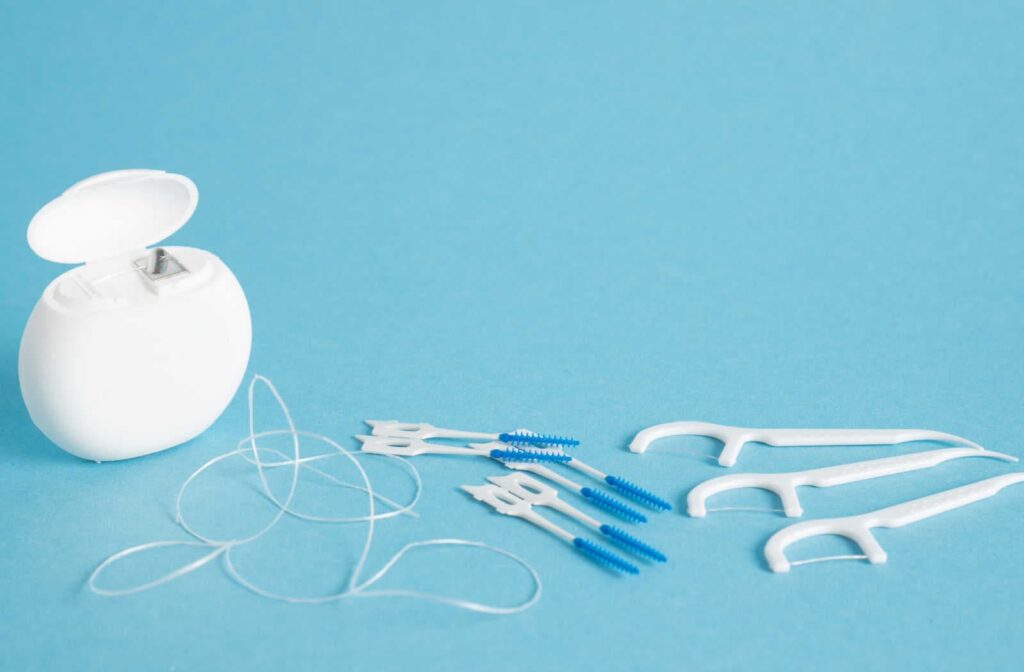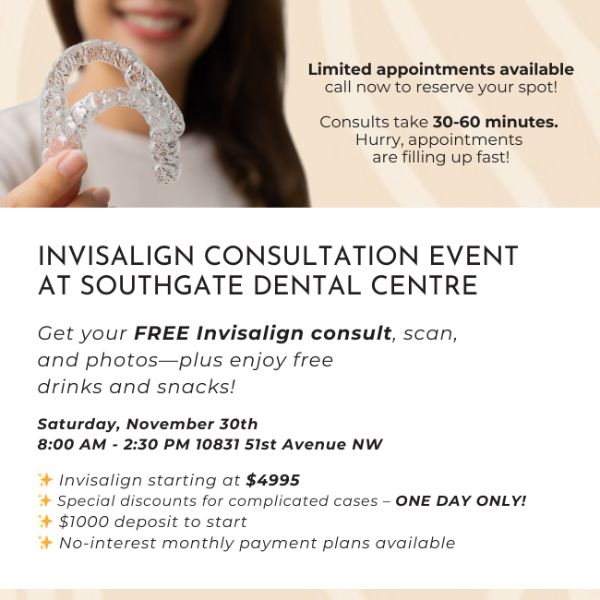Flossing isn’t everyone’s favourite activity, and there are many reasons why you might dread having to perform the task each morning.
Nonetheless, flossing is crucial to our oral hygiene and combating plaque that builds up on our teeth. Without it, you’re more likely to experience gum disease, cavities, and other oral health issues. Therefore, we’ve put together a list of 6 alternatives to traditional flossing that you can do to improve your oral health.
In addition to flossing, at Southgate Dental Centre, we encourage you to schedule a teeth cleaning every 6 months to avoid plaque build-up in those hard-to-reach places.
Interdental Brushing
Interdental brushing is an alternative to flossing that uses a small toothpick-like tool with bristles that can work its way between your teeth. It is designed to help clean the hard-to-reach places in your mouth. They can be an excellent tool for removing tiny bits of food and plaque that have started to build on and in between your teeth.
Here is a quick step-by-step guide on how to use an interdental toothbrush:
- Choose an interdental instrument that is an appropriate size for between your teeth. You don’t want it to be too big or small.
- Gently insert the interdental instrument and its small bristles between your teeth and move it in and out a few times.
- Try and avoid bending the interdental instrument to help it last longer.
- Make sure to get the interdental instrument between all of your teeth thoroughly
Dental Tape
Dental tape is very similar to dental floss, but it’s much broader and flatter in shape is the crucial difference. It is used like traditional dental floss and maneuvered between your teeth and gums to remove plaque and food. You might use dental tape over floss if you struggle to hold the thin strands of regular floss or your teeth are a bit farther apart.
Water Flossing
Water flossing, for example a Waterpik, is an irrigator-like tool used to spray water between your teeth to remove food or plaque. It can be an excellent choice for people with braces or other obstacles that make it challenging to use conventional floss.
Here is a step-by-step guide on how to use a Waterpik:
- Fill the flosser with room-temperature water
- Place the water flosser in your mouth
- Then turn on the water flosser to clean between your teeth and keep your mouth over the sink to let the water run out
- Slowly work your way around your mouth while getting your teeth, gums, and spaces between your teeth
- Turn the water flosser off before removing from your mouth
Floss Pick
A floss pick generally takes a D shape, where the floss is positioned between two posts at the top, and then a small handle with a pick is situated at the base. Floss picks are typically found in multi-packs, allowing one use per pick. Remember that floss picks have drawbacks; it can be difficult to wrap them around the tooth and clean your gums.

Pre-threaded Flossers
A pre-threaded flosser, like Superfloss, is a simple tool that allows people to floss as you don’t have to pull the floss through your tight contact. You thread the floss through the larger space between your teeth, as you would regular floss. This might be a great option if you struggle to get conventional floss into your mouth and move it properly between your teeth and gums. Like traditional floss, these will typically have a one-time use and can be purchased in multi-packs.
Powered Air Flossers
Like water flossing, there are also options for powered air flossers that can use air instead of water. Some of the advantages of using a powered air flosser include the following:
- It is less messy than a water flosser
- It can be a good option for people with sensitive teeth
- It’s easy to use for people with braces or retainers
That being said, the water flosser is still a better option as it removes more plaque than a powered air flosser.
Why It’s Important to Floss
Flossing is a critical step in your daily oral hygiene routine and will help to keep your teeth healthy and clean. Your toothbrush cannot remove all the plaque that builds up in the hard-to-reach places in your mouth. This is where flossing comes in handy and reaches those spots between and around your teeth and gums.
Some other benefits of flossing include:
- Removing food particles or stuck pieces of food, like popcorn
- Removing plaque build-up
- Reduces the risk of cavities and gum disease
- It helps combat bad breath
How Often Should You Floss?
It’s recommended that you brush your teeth twice per day and floss at least one time per day. It matters less the time you choose to floss, but it is crucial to make sure that you remove any plaque that forms every 24 hours.
What’s Wrong With Plaque?
Plaque is a combination of bacteria that forms on your teeth and lives off the foods you eat. Over time, the bacteria causes inflammation and gum disease, and it can also produce acid that can damage your enamel. Flossing tends to help more than brushing for bad breath.
We’re Here to Help
If you struggle with using traditional floss, we will be happy to discuss some alternatives or ways that you can make flossing more enjoyable. Please book an appointment at Southgate Dental Centre and speak with one of our friendly staff!



